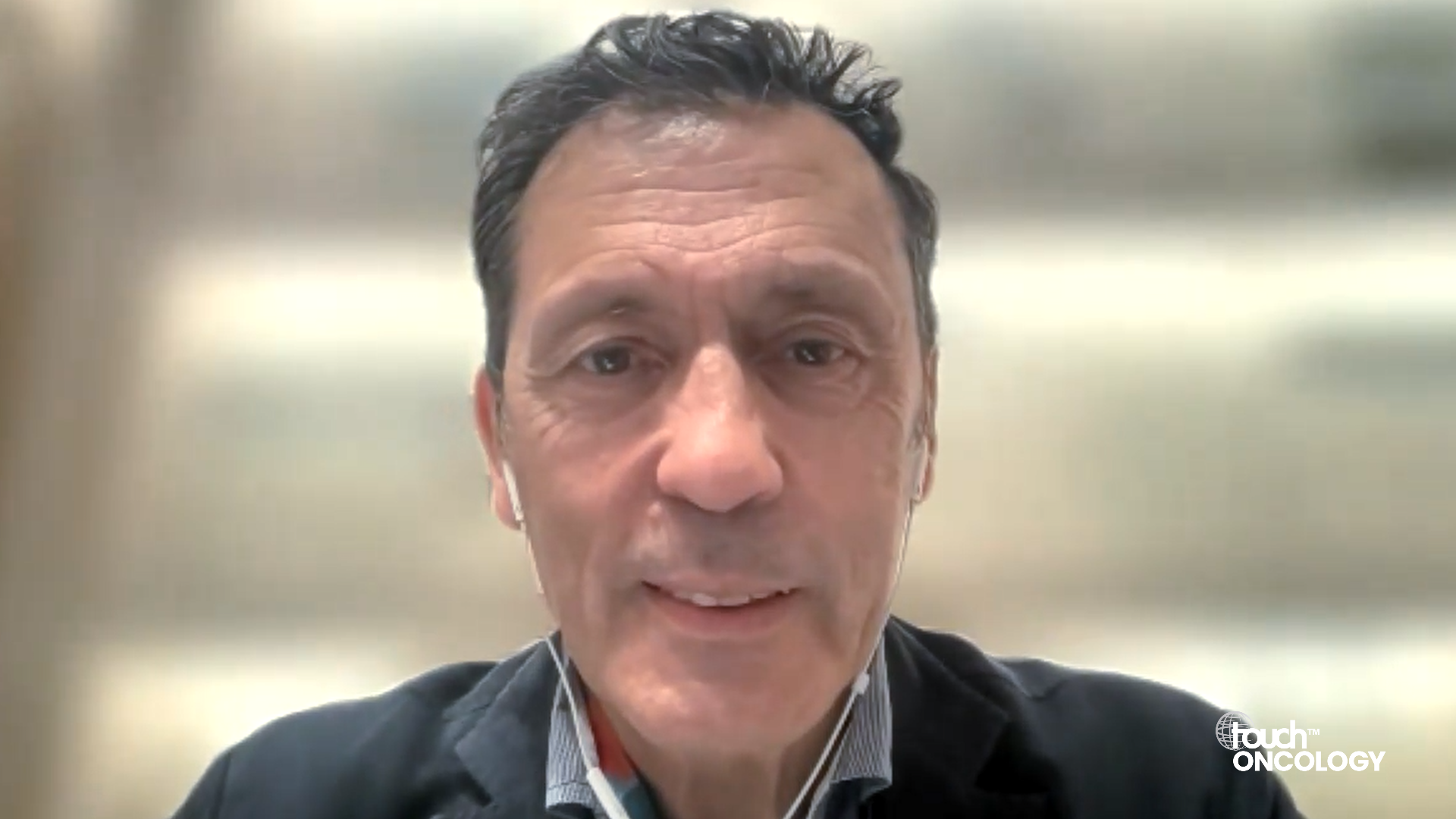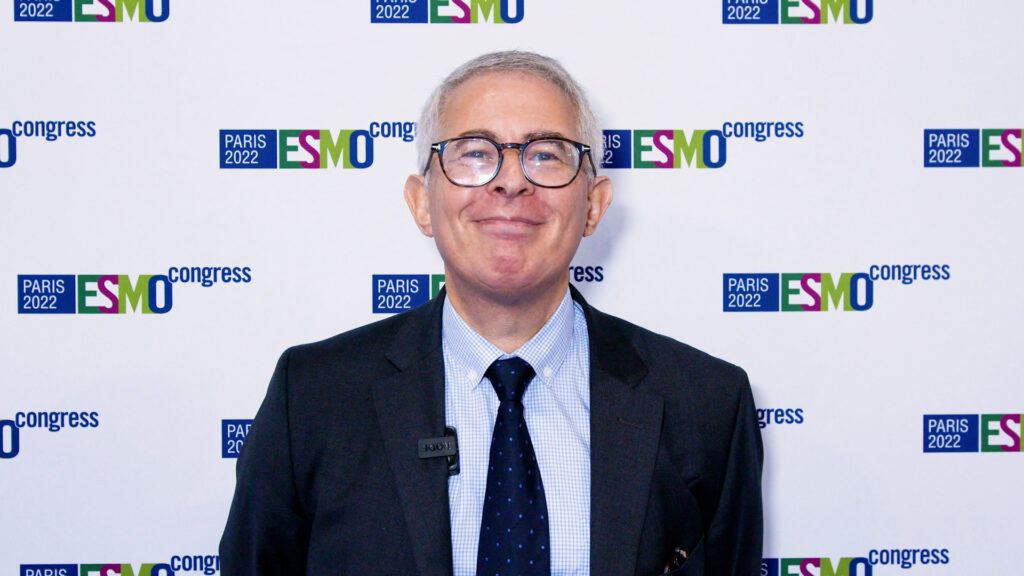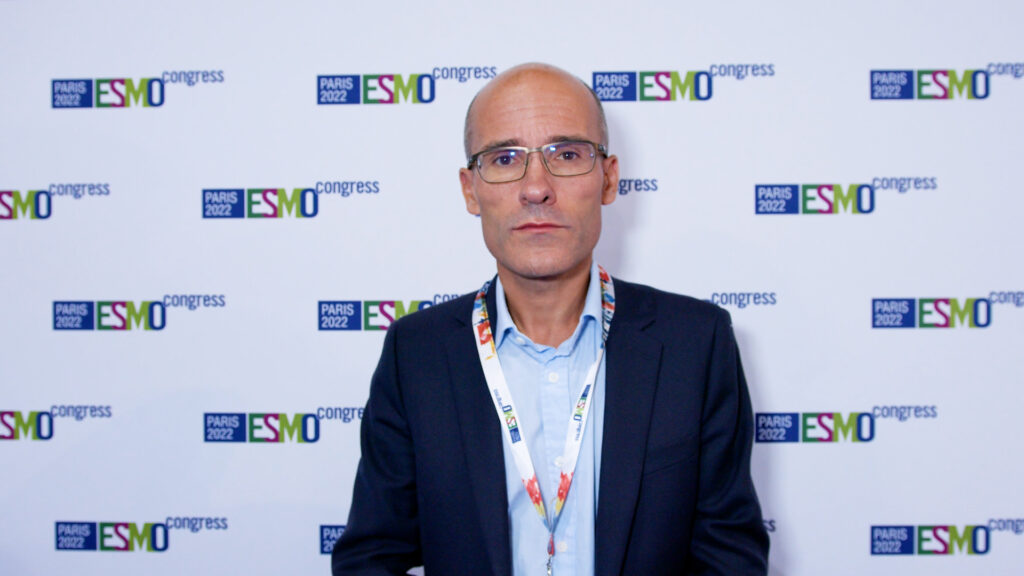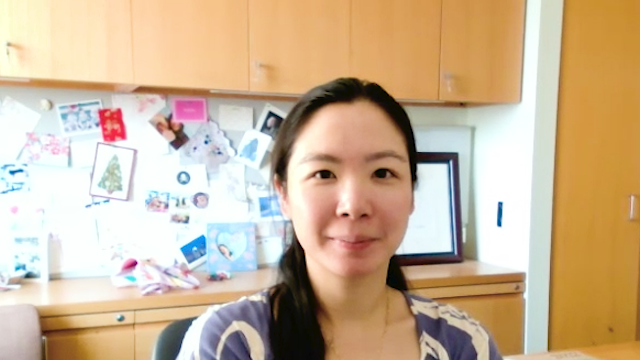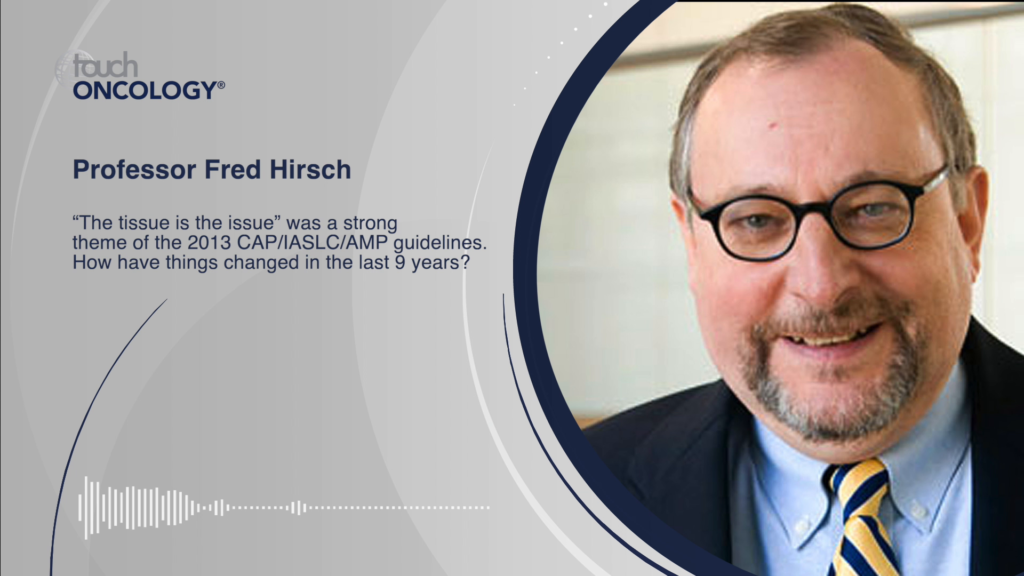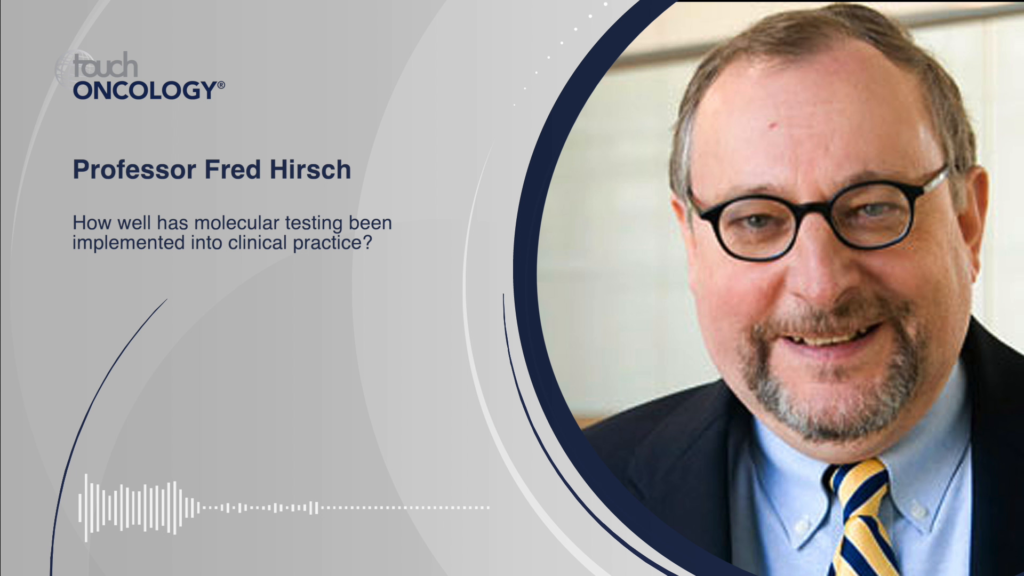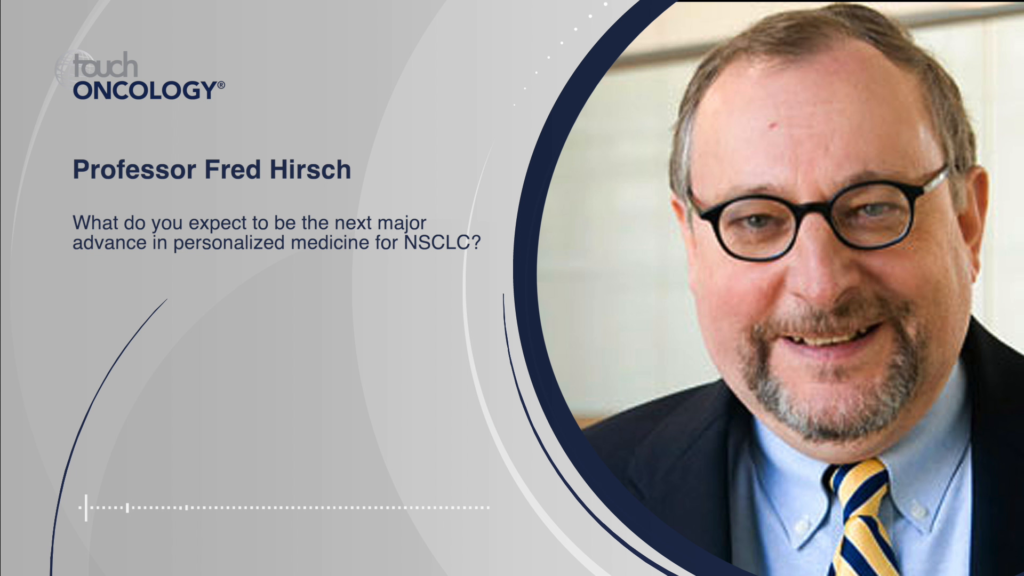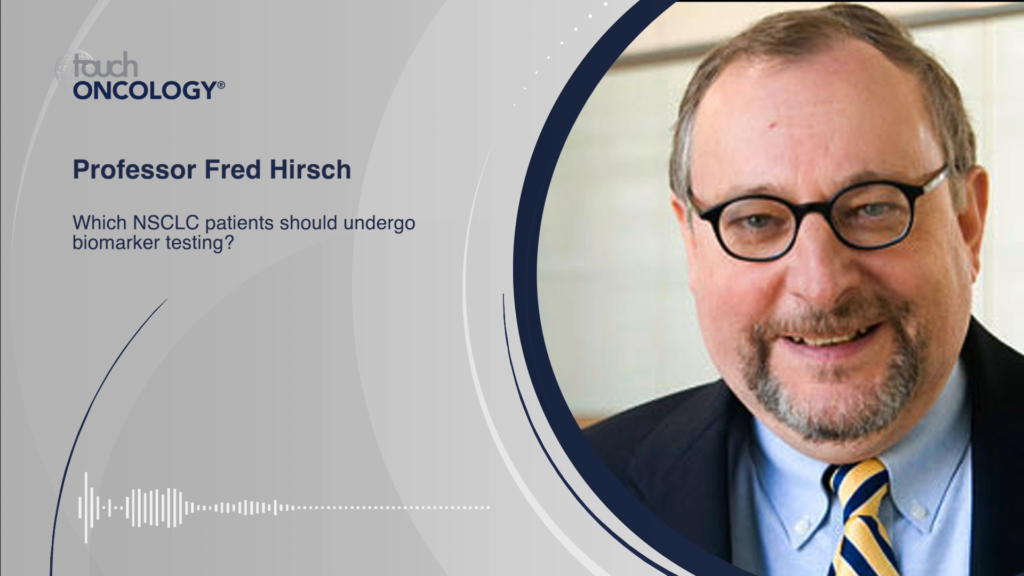The phase II RELATIVITY-104 trial assessed the combination of nivolumab (NIVO) and relatlimab (RELA), a LAG-3-blocking antibody, alongside chemotherapy (PDCT) as a first-line treatment for metastatic non-small cell lung cancer (NSCLC). In this randomized trial, patients receiving NIVO + RELA + PDCT demonstrated a higher overall response rate (ORR) (51.3%) compared to NIVO + PDCT (43.7%). Progression-free survival (PFS) showed trends favouring NIVO + RELA, especially in patients with PD-L1 ≥1% and non-squamous histology. Safety profiles were consistent with previous studies, showing manageable adverse events. Further phase III investigation is needed to confirm these results.
Prof. Nicolas Girard (Institut du Thorax Curie Montsouris, Institut Curie, Paris, France and UVSQ, Paris Saclay, Versailles, France) joins touchONCOLOGY to discuss key mechanisms and rationale behind targeting LAG-3 immune checkpoints in NSCLC.
The late-breaking abstract, ‘Nivolumab (NIVO) plus relatlimab with platinum-doublet chemotherapy (PDCT) vs NIVO + PDCT as first-line (1L) treatment (tx) for stage IV or recurrent NSCLC: Results from the randomized phase II RELATIVITY-104 study’ (LBA53) was presented at the European Society of Medical Oncology Congress 2024 on 13–17 September 2024 in Barcelona, Spain.
Questions
- What are the key mechanisms behind PD-1 and LAG-3 immune checkpoints in inhibiting T-cell function in non-small cell lung cancer (NSCLC)?
- Could you explain the significance of the improved objective response rate (ORR) in patients receiving nivolumab plus relatlimab plus platinum-doublet chemotherapy compared to nivolumab plus platinum-doublet chemotherapy?
- What was the safety profile of the nivolumab plus relatlimab plus platinum-doublet chemotherapy regimen in comparison to the nivolumab plus platinum-doublet chemotherapy arm?
- How do the results from RELATIVITY-104 pave the way for future phase III trials?
Disclosures: Prof. Niscolas Girard discloses acting as a consultant for BMS, Abbvie, MSD, Daiichi Sankyo, GIlead, AZ, Beigene and Roche; receiving grant/research support from MSD, BMS; and participating on a speaker’s bureau with Abbvie and BMS.
This content has been developed independently by Touch Medical Media for touchONCOLOGY. It is not affiliated with the European Society of Medical Oncology (ESMO). Views expressed are the speaker’s own and do not necessarily reflect the views of Touch Medical Media.
Transcript
Hello. I’m Nicolas Girard. I’m the head of medical oncology at Institut Curie in Paris.
1. What are the key mechanisms behind PD-1 and LAG-3 immune checkpoints in inhibiting T-cell function in non-small cell lung cancer (NSCLC)?
Well, LAG-3 is a key immune checkpoint, which is expressed by T-cells, and it’s working with PD-1 at the cell surface of the of the of these T-cells and through the interaction with, PD-1 at the cell surface of cancer cells we have an inhibition of the activating signal for these T-cells so at the end when inhibiting LAG-3 and PD-1, PD-L1 we have a kind of synergy to reactivate anti-tumour immune responses.
2. Could you explain the significance of the improved objective response rate (ORR) in patients receiving nivolumab plus relatlimab plus platinum-doublet chemotherapy compared to nivolumab plus platinum-doublet chemotherapy?
Well, so relatlimab is a LAG-3 blocking antibody. Nivolumab is a PD-1 blocking antibody. So at the end Nivolumab plus relatlimab are working together in a synergistic way to improve anti-tumor immune responses, this combination has been approved in advanced melanoma.
So in the RELATIVITY-104 trial, we compared the combination of chemotherapy plus nivolumab, a combination of chemo plus nivolumab plus relatlimab. The objective was to identify the contribution of relatlimab for the primary endpoint of the trial, which was response rate by blending independent committee review.
In this study, 300 patients were randomized in a ratio of 1:1 to either of these combinations. And we are looking here at patients with metastatic first-line, meaning treatment-naïve non-small-cell lung cancer patients without driver alterations. And the primary endpoint in this study was not statistically significant in the two arms, still we have a tendency towards improved response rate in the ITT [intention-to-treat] population as well as other efficacy outcomes such as PFS [progression-free survival]. So, at the end, we went to look at the subgroups of patients who, actually benefited the most from the combination versus chemotherapy plus immunotherapy. This was actually based on the stratification factor which was where histology and PD-L1 expression. So we looked at subgroups based on histology and PD-L1 expression.
Finally, patients with PD-L1 positive tumours had a clear benefit in terms of PFS and response rate with the addition of relatlimab to nivolumab plus chemotherapy and this was even higher in non-squamous-cell carcinoma. So when combining PD-L1 positive and non-squamous-cell carcinoma histology we have a hazard ratio for PFS that is 0.55 moving from 7 months to nearly 12 months median PFS, which is clinically meaningful and for response rate moving from 40% to 58%. So at the end, this population is the the key subgroup where relatlimab may provide the highest benefit, and this would be the population for subsequent phase III trials.
3. What was the safety profile of the nivolumab plus relatlimab plus platinum-doublet chemotherapy regimen in comparison to the nivolumab plus platinum-doublet chemotherapy arm?
So with the combination of chemotherapy plus nivolumab plus relatlimab, the most frequent adverse event is neutropenia, neutropenic sepsis. And to mitigate these risks based on the results from part 1 of RELATIVITY-104 when we looked at the dosing of relatlimab, a prophylaxis with miliary growth factors was implemented in the nivolumab plus chemotherapy plus relatlimab arm. And at the end, with this prophylaxis, we have a similar safety profile in the two arms of the trial. Most frequent side effects were again neutropenia, mostly in patients older than 60 years old.
We have a similar rate of of discontinuation related to treatment related adverse events, which is 13%. And grade 3/4 treatment-related adverse events in the two arms were observed in 55% of the patients.
4. How do the results from RELATIVITY-104 pave the way for future phase III trials?
Well, the the key point is to personalize immunotherapy, especially immunotherapy combination. We do not have a biomarker specific for LAG-3. We can measure LAG-3 expression but it’s at the cell surface of T-cells so it’s just reflecting PD-L1 expression by tumour cells. So at the end, this group of patients, non-squamous PD-L1, 1-49% percent will be the patient population for the phase III trial RELATIVITY-1093. So it will compare chemotherapy plus nivolumab plus relatlimab to the standard of care in this situation, which is, chemotherapy plus pembrolizumab. And maybe additional trials could be performed in patients with PD-L1 above 55% with this combination.
Interviewer/Editor: Helen Bowden
Cite: Girard N. Nivolumab plus Relatlimab in NSCLC: Findings from the RELATIVITY-104 Trial. touchONCOLOGY. October 2, 2024.


